
Filter News
Area of Research
- Biology and Environment (9)
- Computational Biology (1)
- Computer Science (1)
- Electricity and Smart Grid (1)
- Energy Science (9)
- Functional Materials for Energy (1)
- Fusion and Fission (3)
- Isotope Development and Production (1)
- Isotopes (2)
- Materials (20)
- Materials for Computing (3)
- National Security (11)
- Neutron Science (7)
- Nuclear Science and Technology (2)
- Supercomputing (19)
News Topics
- (-) Artificial Intelligence (15)
- (-) Cybersecurity (9)
- (-) Exascale Computing (9)
- (-) High-Performance Computing (16)
- (-) Isotopes (4)
- (-) Materials Science (20)
- (-) Physics (12)
- (-) Security (4)
- 3-D Printing/Advanced Manufacturing (14)
- Advanced Reactors (4)
- Big Data (11)
- Bioenergy (21)
- Biology (30)
- Biomedical (6)
- Biotechnology (3)
- Buildings (16)
- Chemical Sciences (15)
- Clean Water (5)
- Composites (4)
- Computer Science (26)
- Coronavirus (9)
- Critical Materials (5)
- Element Discovery (1)
- Energy Storage (26)
- Environment (40)
- Fossil Energy (1)
- Frontier (10)
- Fusion (9)
- Grid (13)
- Hydropower (8)
- Irradiation (1)
- ITER (2)
- Machine Learning (10)
- Materials (37)
- Mercury (2)
- Microscopy (14)
- Nanotechnology (9)
- National Security (17)
- Neutron Science (15)
- Nuclear Energy (13)
- Partnerships (8)
- Polymers (5)
- Quantum Computing (7)
- Quantum Science (9)
- Simulation (6)
- Space Exploration (6)
- Summit (7)
- Transportation (12)
Media Contacts

Drilling with the beam of an electron microscope, scientists at ORNL precisely machined tiny electrically conductive cubes that can interact with light and organized them in patterned structures that confine and relay light’s electromagnetic signal.

More than 50 current employees and recent retirees from ORNL received Department of Energy Secretary’s Honor Awards from Secretary Jennifer Granholm in January as part of project teams spanning the national laboratory system. The annual awards recognized 21 teams and three individuals for service and contributions to DOE’s mission and to the benefit of the nation.
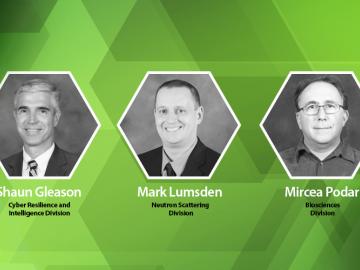
Three ORNL scientists have been elected fellows of the American Association for the Advancement of Science, or AAAS, the world’s largest general scientific society and publisher of the Science family of journals.

A new version of the Energy Exascale Earth System Model, or E3SM, is two times faster than an earlier version released in 2018.

A team of scientists led by the Department of Energy’s Oak Ridge National Laboratory and the Georgia Institute of Technology is using supercomputing and revolutionary deep learning tools to predict the structures and roles of thousands of proteins with unknown functions.

Neuromorphic devices — which emulate the decision-making processes of the human brain — show great promise for solving pressing scientific problems, but building physical systems to realize this potential presents researchers with a significant
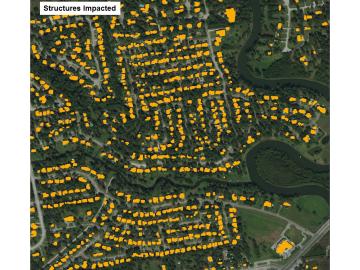
Geospatial scientists at Oak Ridge National Laboratory have developed a novel method to quickly gather building structure datasets that support emergency response teams assessing properties damaged by Hurricanes Harvey and Irma. By coupling deep learning with high-performance comp...
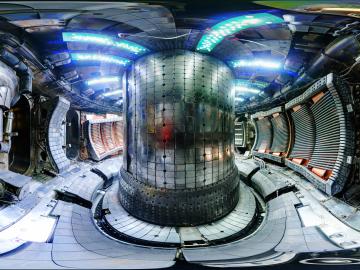
The same fusion reactions that power the sun also occur inside a tokamak, a device that uses magnetic fields to confine and control plasmas of 100-plus million degrees. Under extreme temperatures and pressure, hydrogen atoms can fuse together, creating new helium atoms and simulta...
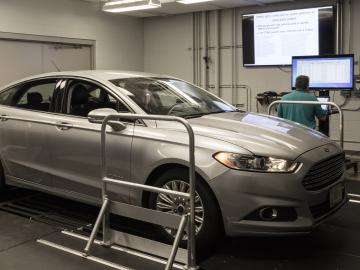
A new Oak Ridge National Laboratory-developed method promises to protect connected and autonomous vehicles from possible network intrusion. Researchers built a prototype plug-in device designed to alert drivers of vehicle cyberattacks. The prototype is coded to learn regular timing...
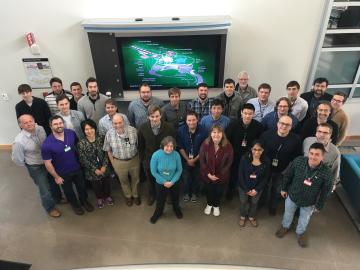
After more than a year of operation at the Department of Energy’s (DOE’s) Oak Ridge National Laboratory (ORNL), the COHERENT experiment, using the world’s smallest neutrino detector, has found a big fingerprint of the elusive, electrically neutral particles that interact only weakly with matter.


